
19 Arborvitae Landscaping Ideas: How To Use Arborvitae Trees To Improve Your Yard Design
Published: 17/01/2023 | Updated: 22/05/2023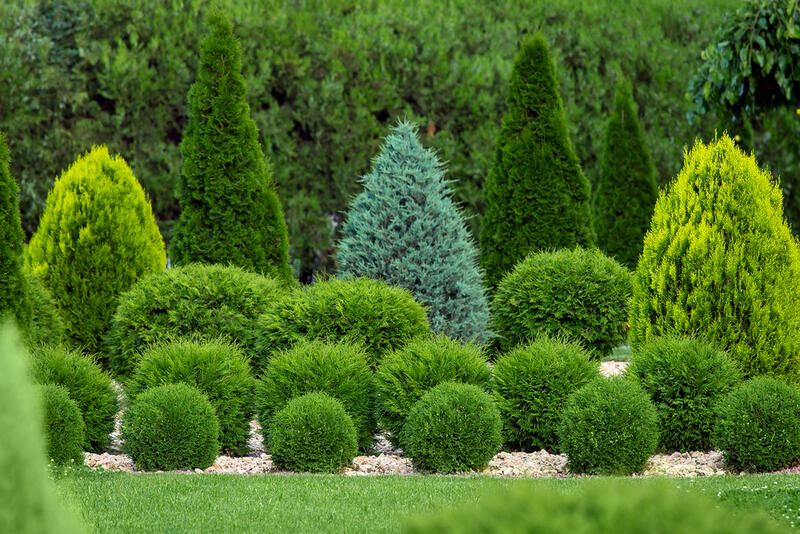
If you're looking for a plant that can add visual interest to your landscape and withstand harsh winters, arborvitae is an ideal choice.


Also known as Thuja occidentalis, these trees have many uses, from screening out unwanted views to creating privacy walls.
As long as you know what type of arborvitae to plant when it should be planted, and where you need them most in your yard design (such as near walkways or entrances), then these versatile deer-resistant plants will work wonders for any home garden design project!
1. Look at the Growing Conditions
As with any plant, it's important to know what growing conditions arborvitae trees need.
Arborvitae is hardy to zones 2-8 and can tolerate a wide range of soil pH. They also tolerate partial shade or full sun, although they'll grow faster in sunnier conditions.
Watering needs vary depending on the type of arborvitae you're planting:
-
Dwarf varieties need regular watering.
-
Giant arborvitae (the green giant) types don't require much at all! They can be watered every ten days once established.
-
American arborvitae (also known as eastern arborvitae or northern white cedar arborvitae) and north pole arborvitae should be watered regularly every 3-4 days.
Temperature range also affects how you should care for your trees (and other plants).
In general, most species will thrive between 40˚F and 95˚F, but some prefer cooler temperatures while others will tolerate warmer ones.
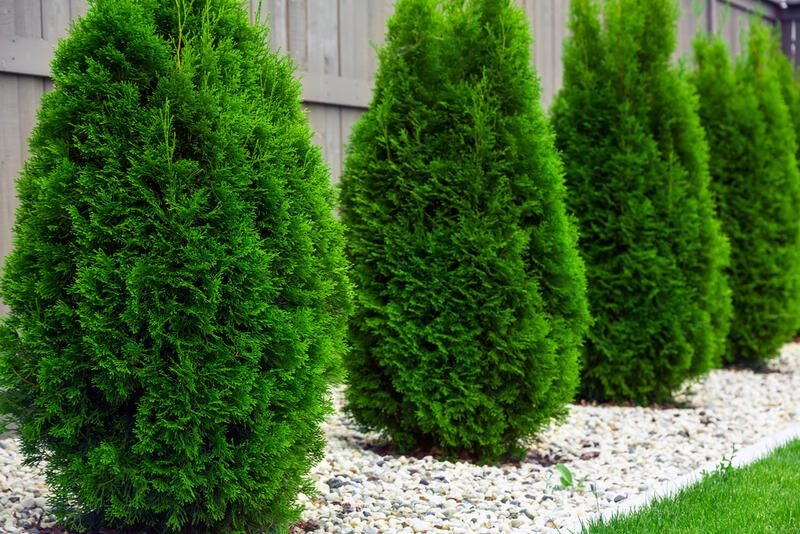
2. Choose a Variety that Will Thrive in Your Area
In addition to the overall shape, size, and color of your arborvitae, there are several other factors you should consider before planting a tree.
You may want a tree that grows very slowly to make sure it develops the right form for the space you’re using it in. Or maybe you want something fast-growing so you can harvest lumber from it at some point.
And if there is an area where wildlife will be present (like a garden), then there are certain varieties of Arborvitae that would be better suited for this situation than others because they are not as prone to being eaten by deer or rabbits.
3. Structure Your Design with a Straight Line of Arborvitae Trees
Use a straight line of emerald green arborvitae to create visual interest in your yard. This technique is best used on long, straight stretches of property, like the front or back yards of a house.
The trees should all be the same variety, so look for one that will thrive in your area (most people choose an evergreen).
In addition to looking great, this type of landscaping also helps to block out unwanted views—a great way to add privacy if you're trying to keep passersby from seeing into your yard.
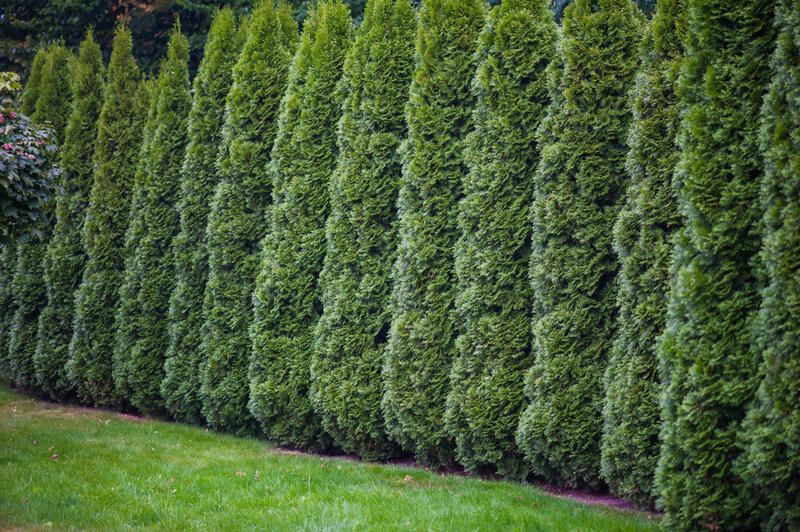
4. Use Arborvitae Trees to Create More Privacy
If you need more privacy, arborvitae trees are one way to go about it. You can plant them in a row and create a wall of trees.
The staggered formation is another option where you place the rows of arborvitae trees at different intervals from each other so that there’s less visibility from one side of the yard compared to the other side.
You could also plant your arborvitae trees in circular formations, square formations, rectangular formations, or even triangular or hexagonal formations if needed!
5. Plant Golden Globe Arborvitae in Rock Gardens or Flower Beds
Golden Globe Arborvitae is a great choice for rock gardens or flower beds. They're also a good option for planting in front of your foundation, house, fence, wall or tree.
Arborvitae varieties are adaptable to many different soil types. So you can plant them in the ground or root them in containers.
6. Plant Them Along Walkways
Arborvitae trees have a long history of being used as part of a hedge, but they can also be planted in rows or clusters to create borders.
For example, you can plant them along your walkway as an additional border for your garden. This is especially helpful if you have an existing fence that needs another layer of protection from the elements.
This is especially true if you want to make sure that there's no way anyone will accidentally step on any of your plants!
You don't want anyone hurting themselves because they didn't see where the tulips were planted!
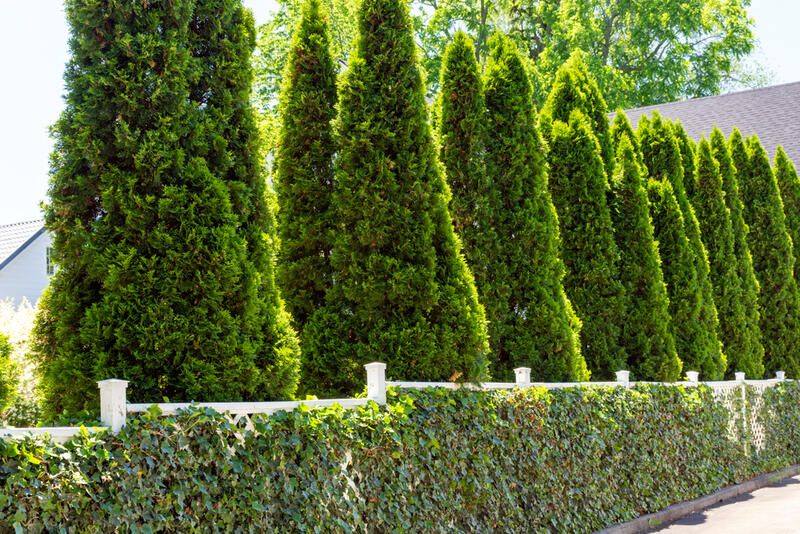
7. Use Them to Frame Taller Varieties in Your Garden
Arborvitae trees are perfect for creating borders around taller plants, like flowering perennials and shrubs. They can also be used as a backdrop for taller plants, providing a great sense of depth to your landscape plan.
They make great border trees because they grow tall and fast, so they won't easily be overwhelmed by surrounding vegetation.
If you want something more formal than an informal hedge between two masses of flowers or shrubs, then an arborvitae tree will work perfectly!
Also, consider using them as the frame around a garden path that leads up toward your front door (this works particularly well if you have an entryway with multiple steps) or along the foundation of your house itself!
8. Add Winter Interest with Pine Cones
You can add some winter interest to your yard design with pine cones! Pine cones are a traditional decorative accent, which can be planted with various arborvitae varieties.
You can use pine cones as party décor on a table or mantel, or you might even use them as an accent in the garden. Pine cones are a fun and easy way to incorporate nature into any space!
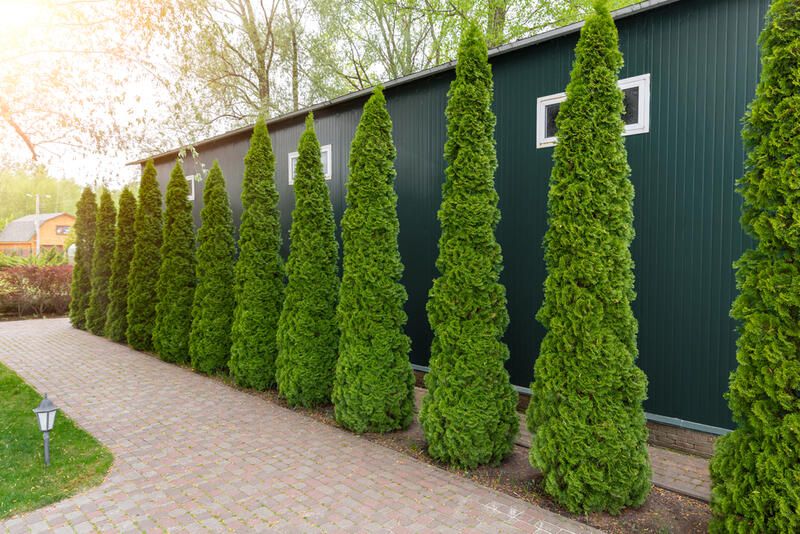
9. Mix in Colorful Shrubs with Your Arborvitae Plants
For a more dynamic look, mix in colorful shrubs and flowering plants with your arborvitae trees. You can also use two different types of arborvitaes, to create a more interesting landscape design.
In addition to adding height variation, mixing up the foliage colors will make your yard design more eye-catching. Try using flowers that bloom at different times throughout the year so that there is something blooming in every season.
Also include small trees or large bushes that have different shapes and textures than large evergreens like arborvitaes do (though you shouldn't limit yourself to only these options).
10. Surround Your Trees for a Stunning Focal Point
Do you have an empty space that needs to be filled? Do you have no idea what to do with all those trees in your yard?
Don’t worry! Arborvitae trees are the perfect plants to surround and frame other plants. They can be used as a backdrop, or they can be used as a focal point in your yard.
Choose one of them (or several), and use it as a living wall. It’s like having your own personal little forest in your backyard!
11. Fill Bare and Open Spaces in Your Garden with Low-Growing Varieties
The best way to fill your garden with arborvitae trees is by using dwarf varieties. They are perfect for filling in open spaces and creating a visually pleasing landscape that complements the rest of your yard.
Some of these trees can also be used as ground cover, border plants, groundcovers, and rock gardens.
There are many different species of dwarf arborvitae trees—and some will do better than others depending on where you live.
The best thing about dwarf arborvitae trees is that they grow slowly enough that they will not overtake other shrubs or perennials in your yard over time. Once established, these plants should require minimal maintenance as well!
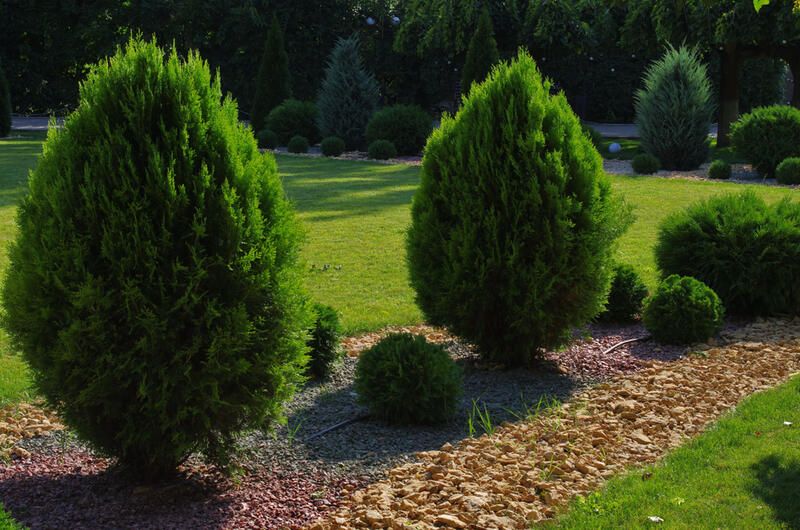
12. Create Privacy With a Living Wall Garden
A living wall can be the perfect addition to your yard if you're looking for a way to add privacy.
The key is to use a variety of plants with different heights, colors, and textures in order to create interest and make sure that the living wall stays beautiful year-round.
Plant a wall near the house or in an area where you want privacy from noise—the sounds of cars driving by on busy streets, airplanes flying overhead, or even noisy neighbors!
13. Make a Statement With Black-Leaved Varieties of Arborvitae That Tolerate Shade
If you're looking to make a statement in your yard, then consider using arborvitae that has black leaves or emerald green arborvitae. These varieties are more tolerant of shade than other types of arborvitae and they can be used as focal points in the garden or as hedges.
Black-leaved arborvitaes also work well in rock gardens, especially if you want to add some contrast to your landscaping design.
Some of the best black-leaved varieties include:
-
Smaragd, which grows up to 20 feet tall with shiny green leaves that turn dark blue-green in winter.
-
Thiensville Green (also known as Emerald Green), has dark green foliage throughout the season.
-
Green Globe, which grows up to 15 feet tall with dark green foliage all year round.
14. Have Fun With the Different Shapes Available of Varieties of Arborvitae Plants
Not all arborvitae plants are the same. There is a range of shapes available, from the classic columnar to more rounded forms.
If you're looking for a tree that will grow tall and straight, then choose Italian or Golden Arborvitaes. They have flat tops that won't be visually obtrusive in your yard design.
If you want something more interesting, try one of the other varieties such as Chinese Arborvitaes or Emerald Green Arborvitaes because they are not as dense and have a more defined shape than other kinds of trees do.
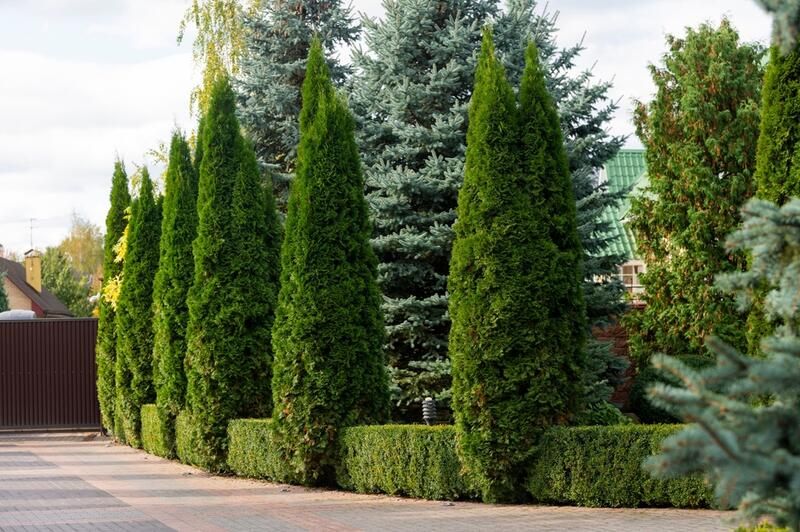
15. Grow Dwarf Varieties Inside Containers on Decks or Patios for Easy Care and Low-Maintenance Landscaping Options
If you’re looking for a low-maintenance tree that can be easily moved, consider growing dwarf varieties in containers.
While they are great landscape choices, they can also be grown indoors on decks or patios. This is especially helpful if you live in colder climates where the ground may remain frozen during the winter months.
When choosing the right container size, think about how much sunlight your arborvitae will receive.
Try to match the tree’s current size so it won't outgrow its pot as it grows taller over time (you can always move up to another pot).
Dwarf varieties should grow no taller than 6 feet so long as they have enough space in their container—with extra room for roots to spread out beneath them!
16. Plant Them in a Row to Grow a Privacy Screen
To keep privacy, you can plant a row of arborvitae trees along the edge of your property. You can also plant them in a curved line, which is also aesthetically pleasing.
You will want to make sure that they are spaced far enough apart so that they do not touch each other and create one “wall” when they grow large.
17. Use Arborvitae as a Hedge Around Your Property
Arborvitae makes excellent hedges because they are dense, tall, and full. The best way to use arborvitae for this purpose is to plant them close together in the position that you want your hedge.
Make sure that your arborvitae hedge is thick enough so that it will be solid from all sides and not just from one side of your yard or property line if you have one.
It's best to use multiple varieties of Arborvitae plants when planting a hedge because they will complement each other's attributes as well as provide more color than just one variety could offer alone.
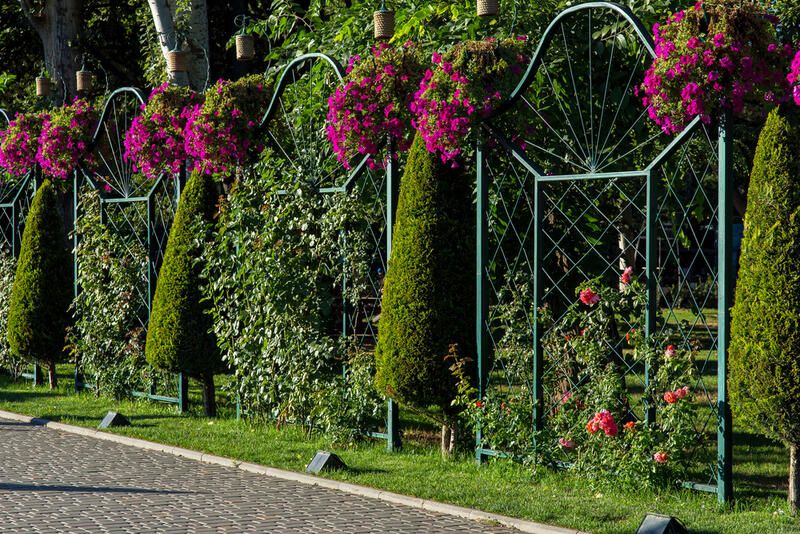
18. Combine Other Plants and Shrubs With Arborvitae in Your Garden
You can combine arborvitae with other evergreen trees or shrubs for a more varied look. If you opt for a mixed grouping, plant them in clusters rather than rows.
For example, place groups of three or four arborvitaes near the north or west side of your home. You could also mix them with other broad-leaved evergreens such as firs and spruces to create an interesting contrast between various shapes and textures.
To add color to your landscape design, combine arborvitaes with flowering shrubs such as dogwoods (Cornus florida), viburnums (Viburnum spp.), crabapples (Malus spp.), and cotoneasters (Cotoneaster spp.).
They’ll bloom at different times throughout the year so there will always be something new emerging from the garden beds.
19. Use Them As Low-Maintenance Shrubs For Your Rock Garden
If you don’t have a green thumb and/or just don’t have time to invest in the care of a flower bed, why not use arborvitae trees instead?
They can be planted in rock gardens. Planting golden globe arborvitae along walkways in your yard design. They will add winter interest with pine cones.
Finally,
You can use these 19 arborvitae landscaping ideas to add some flair to your yard.
The options are endless when it comes to arbors and the best part is that you don’t need any special tools or equipment—just a shovel and some patience!
And if you need help revamping your yard design, don't hesitate to contact ShrubHub's experts!


